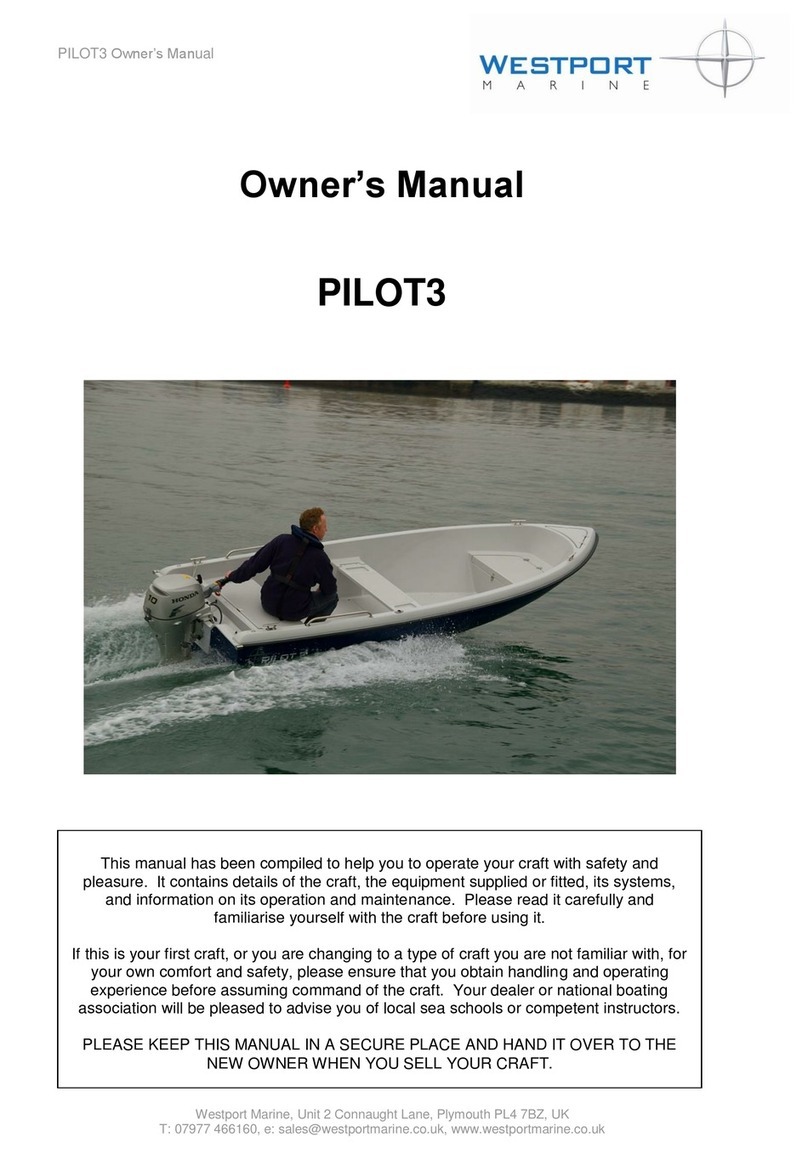
PILOT6 Owner’s Manual
Page 9 of 10
Mooring, Anchoring & Towing (W)
During mooring and anchoring operations access to the fore deck is via the foredeck access
hatch in the cuddy windscreen. By standing through the hatch, it is possible to reach the
anchor locker, foredeck cleat and fairleads in safety. At no time should any person sit or
stand on the foredeck.
Prior to launching, mooring or anchoring it is recommended that all lines & fenders be
prepared and attached to the boat, as required, prior and in good time to the operation to be
undertaken. Always plan ahead and assess any potential difficulty, ensuring that your crew
are fully aware of your intentions and their responsibilities.
It is the owner’s/operators responsibility to ensure that mooring lines, tow lines and anchor,
chain & line are adequate for the vessel’s intended use. The breaking strength of all
lines/chains shall in general not exceed 10.25KN/1.045 tonnes (80% of the breaking strength
of the deck cleats).
Owners should consider and practice the making fast of a tow line, in a manner that shall
allow the tow to be release while under load, ensuring that they are fully prepared in the
event of an emergency.
Always tow or be towed at a slow speed. Never exceed the hull speed of a displacement
craft when being towed.
Launching & Trailering (W)
Ensure that the centre rollers of the trailer bear the keel of your boat in a correct way, and
adjust the lateral bearing to avoid any movement. Do not forget to fasten the tie down
straps. Do not load the craft when trailering.
New owners/operators should seek instruction/guidance on launching and recovery from the
dealer or local sea school/powerboat instructor. Do not attempt launching/recovery without
adequate instruction.
Lifting (D)
Adjust the location and length of lifting strops to ensure the craft is horizontal when being
lifted. Provide protection between the strops and the craft. Do not use warp to lift the craft.
Do not load or stand under the craft while being lifted.
Outboard Engine (C)
Refer to the engine manual. Always flush the cooling system with fresh water after use.
Cleaning (C)
Use as few cleaning agents as possible, do not discharge waste agents into the water, and:
Clean your craft preferably on land
Avoid scratching of the hull, use a high-pressure water machine
Do not use abrasive cleaning or polishing methods
Do not use solvents or aggressive detergent
Always rinse down after use
Winter Storage (C)
Refer to the engine manual for winterising the engine, otherwise generally include the
following:
Remove, charge and store the battery in a dry, ventilated place protected from frost
Grease the steering gear
Remove all water from the craft and protect it from rain, preferably stored inside
Inspect all areas, fixtures & fittings replacing any doubtful components






























